Grand Bahama is a beautiful island located in the Bahamas, filled with lush greenery and surrounded by waters that are teeming with life. Among the many forms of wildlife that thrive on Grand Bahama are numerous species of birds.
These feathered creatures are an essential part of the ecosystem, and many birdwatchers and nature enthusiasts visit the island every year to observe and learn about these fascinating creatures. From the smallest songbirds to majestic wading birds, Grand Bahama is home to a variety of bird species that are sure to captivate and delight anyone with an interest in aviary biology.
In this article, we’ll explore the many different types of birds found on Grand Bahama, their habitats, and their behavior patterns.
1. Cuban Emerald
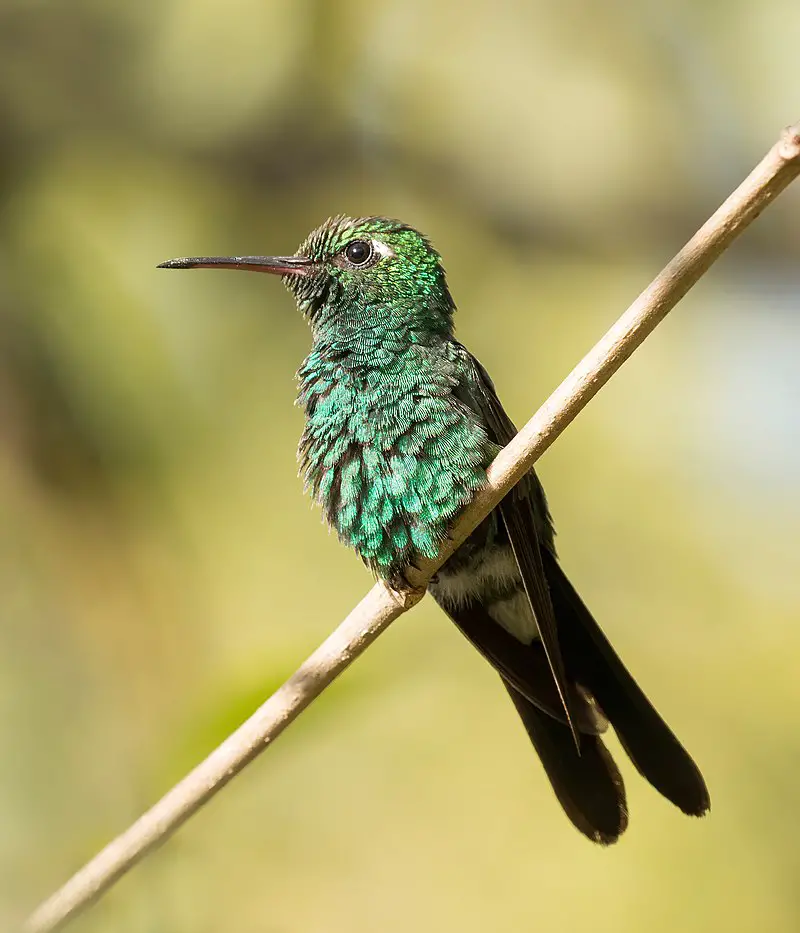
The Cuban Emerald is a species of hummingbird found in the Bahamas and Cuba. It belongs to the Trochilini tribe, which are known as ’emeralds’.
This bird was formerly placed in the genus Chlorostilbon but recent studies have shown that it actually belonged with other emeralds.
The body of this small bird is predominantly green-colored with an iridescent blue throat patch on its chin and some purple or bronze feathers towards its tail end.
Its diet consists mainly of nectar from various flowers, although insects also form part of their daily sustenance.
They use their long curved beaks to reach deep into tubular flowers for nectar, while hovering mid-air like tiny helicopters.
With no natural predators due to their quick maneuverability and powerful wings; these birds can fly up to speeds over 50 km/h.Scientific classification:
| Kingdom | Animalia |
| Phylum | Chordata |
| Class | Aves |
| Order | Apodiformes |
| Family | Trochilidae |
| Genus | Riccordia |
| Species | R. ricordii |
Also Featured In: Most Common Types of Birds Found in Cuba, Green Birds Commonly Found in Florida
2. La Sagra’s Flycatcher

La Sagra’s flycatcher is a beautiful passerine bird that belongs to the tyrant flycatcher family. It can be found in subtropical or tropical moist lowland forests, mangrove forests and other tropical areas of Cuba, Bahamas, Grand Cayman and southern Florida (as an occasional vagrant).
This species has greyish-brown upperparts with yellowish rump; its wings are dark brown while underparts have buffy wash on throat and breast.
La Sagra’s flycatchers feed mainly on insects but they also eat some fruits sometimes. They often perch atop tall trees before making sallies into midair after catching prey in their bills.
These birds nest in large colonies where they build cup-shaped nests from twigs above ground level near water bodies like streams or rivers.
La Sagras’s Flycatchers are active during day time when they search for food both alone as well as in groups allowing them to easily spot predators which may threaten their young ones nesting nearby.Scientific classification:
| Kingdom | Animalia |
| Phylum | Chordata |
| Class | Aves |
| Order | Passeriformes |
| Family | Tyrannidae |
| Genus | Myiarchus |
| Species | M. sagrae |
Also Featured In: Beautiful Birds Found in Grand Cayman,
3. Cuban Pewee
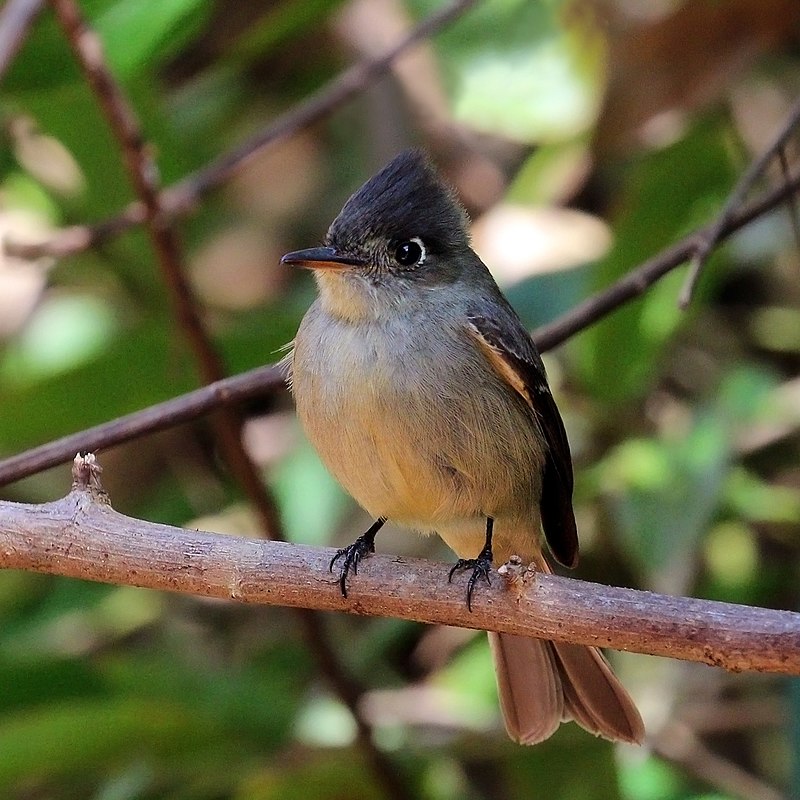
The Cuban Pewee is a species of bird belonging to the Tyrannidae family, found in Cuba and the northern Bahamas. It has a dark olive-grey upper body and dark grey underneath with white underwings.
Its head features an eye stripe that forms into a crescent shape near its beak.
Measuring 16 cm long, it can easily be identified by its distinct call heard during breeding season which includes whistles, chirps and rattling noises like marbles being shaken in a container.
The Cuban Pewee feeds on insects caught midair or gleaned from tree branches while perching.
During winter months they form mixed flocks with other birds where they search for food together such as fruit or nectar from flowers at forest edges or gardens – making them beneficial pollinators too.Scientific classification:
| Kingdom | Animalia |
| Phylum | Chordata |
| Class | Aves |
| Order | Passeriformes |
| Family | Tyrannidae |
| Genus | Contopus |
| Species | C. caribaeus |
Also Featured In: Great Abaco Island Birds,
4. Thick-Billed Vireo
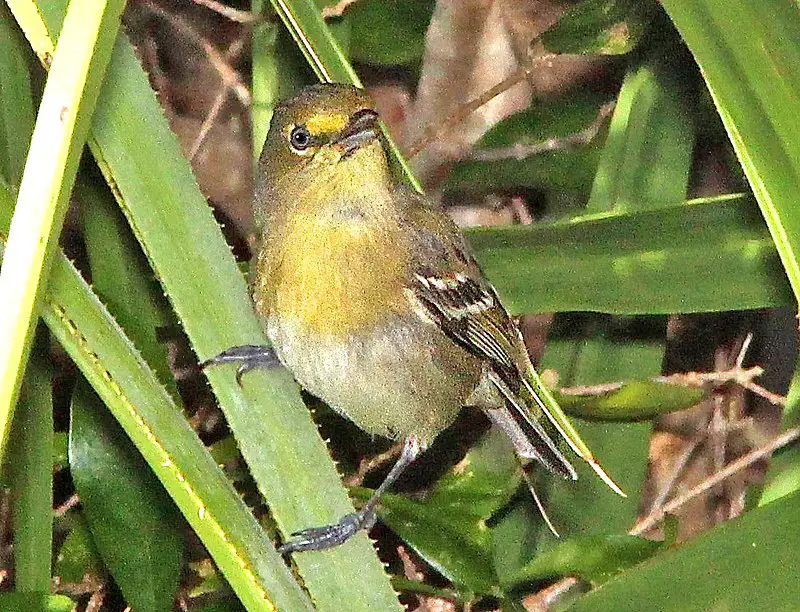
The Thick-billed Vireo is a small songbird native to the West Indies, found in places such as The Bahamas, Turks and Caicos Islands, Cayman Islands and on cays off Cuba.
Occasionally it has been spotted as far away as south Florida. It is classified into one species with two subspecies: Vireo crassirostris and V.c. approximans of Providencia Island which may be considered its own species by some authorities.
This bird prefers dry forests or mangrove swamps for nesting where there are plenty of trees available for habitat protection from predators like hawks or owls.
Its diet consists mainly of insects but also includes fruits when they’re in season.
In order to avoid competition with other birds during breeding times these vireos migrate northward each year between April and June returning again around October before winter sets in making them an interesting sight if you happen to spot one.Scientific classification:
| Kingdom | Animalia |
| Phylum | Chordata |
| Class | Aves |
| Order | Passeriformes |
| Family | Vireonidae |
| Genus | Vireo |
| Species | V. crassirostris |
Also Featured In: Common Birds of Turks and Caicos Islands,
5. Red-Legged Thrush
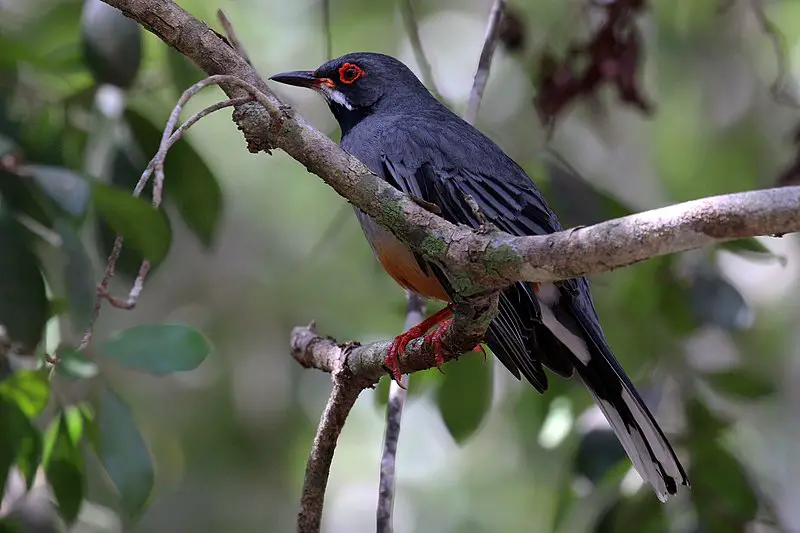
The Red-legged Thrush is a species of bird belonging to the Turdidae family, native to the Caribbean.
It can be found in places such as Bahamas, Cayman Islands and Puerto Rico where it goes by the name ‘Zorzal de patas coloradas’.
Unfortunately, this beautiful creature has been extirpated from Swan Island, Honduras. Its natural habitats are subtropical or tropical moist lowland forests and heavily degraded former forest areas.
This small thrush measures up to 22 cm in length with blackish upperparts while its underparts have reddish tinge on them which gives it an attractive appearance.
They mainly feed on fruits but also hunt for insects occasionally making it omnivorous in nature.Scientific classification:
| Kingdom | Animalia |
| Phylum | Chordata |
| Class | Aves |
| Order | Passeriformes |
| Family | Turdidae |
| Genus | Turdus |
| Species | T. plumbeus |
Also Featured In: Birds that You’ll Find in Puerto Rico,
6. Key West Quail-Dove
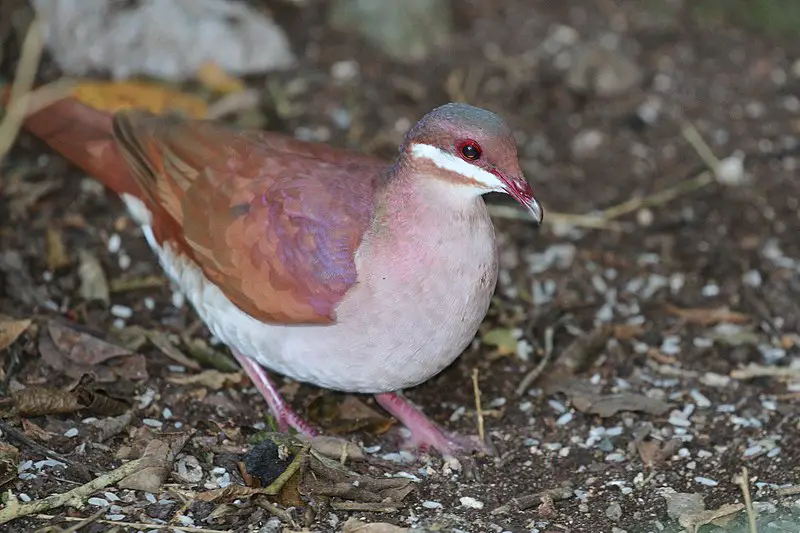
The Key West quail-dove is a species of bird from the Columbidae family, and is closely related to the bridled quail-dove. It breeds in The Bahamas and throughout most of Greater Antilles, except for Jamaica.
Interestingly enough, despite its name it does not currently breed in Florida Keys or Southern mainland Florida.
This dove has a light brown back with white underparts that are streaked on their sides and throat; they also have a distinctive black collar around their neck which makes them easily recognizable along with their red eyes.
These birds tend to live alone or in small flocks near open fields where food (seeds) can be found.
Unfortunately this species’ range seems to be getting smaller due to human activities such as deforestation but there are some conservation efforts being done like creating protected areas within these regions so we hope one day people will get to enjoy watching these beautiful creatures again.Scientific classification:
| Kingdom | Animalia |
| Phylum | Chordata |
| Class | Aves |
| Order | Columbiformes |
| Family | Columbidae |
| Genus | Geotrygon |
| Species | G. chrysia |
7. Bahama Mockingbird
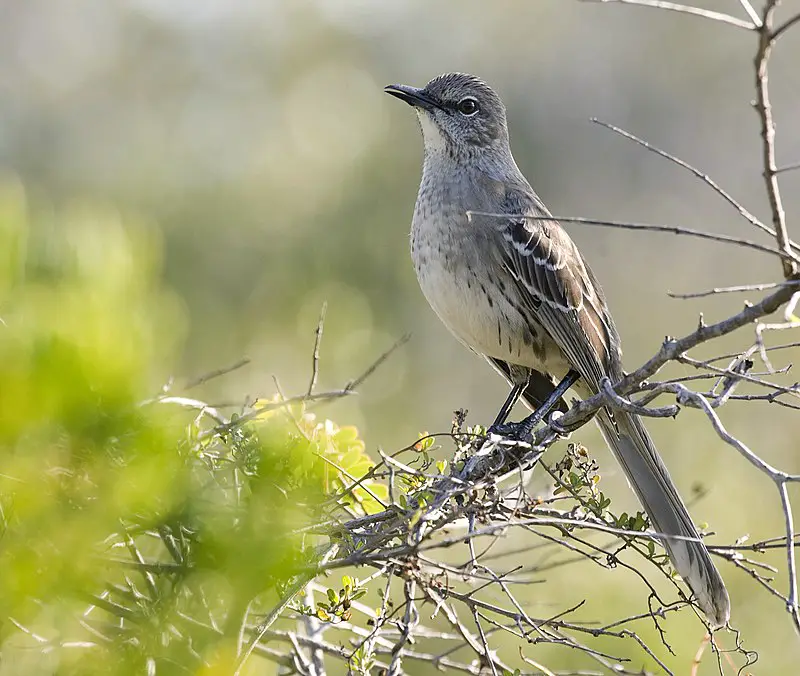
The Bahama Mockingbird is a species of bird found in the Bahamas, Cuba, Jamaica and the Turks and Caicos Islands. It is also known to be a vagrant to Florida.
This medium-sized greyish brown bird has two subspecies – Mimus gundlachii gundlachii (the nominate) and M. g hillii. The specific epithet ‘gundlachii’ honors Juan Gundlach who first described this species in 1841 on his expedition to Cuba.
On an average it measures 28 cm long with a wingspan of 39 cm when fully grown up; however males are larger than their female counterparts by about 10%.
They have gray upperparts along with white underparts which contain spots running down its sides as well as across its breast area for camouflaging themselves against predators like cats or foxes that may prey upon them during nesting season or otherwise.
These birds primarily feed on insects alongside fruits & berries occasionally too making them omnivorous creatures.Scientific classification:
| Kingdom | Animalia |
| Phylum | Chordata |
| Class | Aves |
| Order | Passeriformes |
| Family | Mimidae |
| Genus | Mimus |
| Species | M. gundlachii |
8. Loggerhead Kingbird
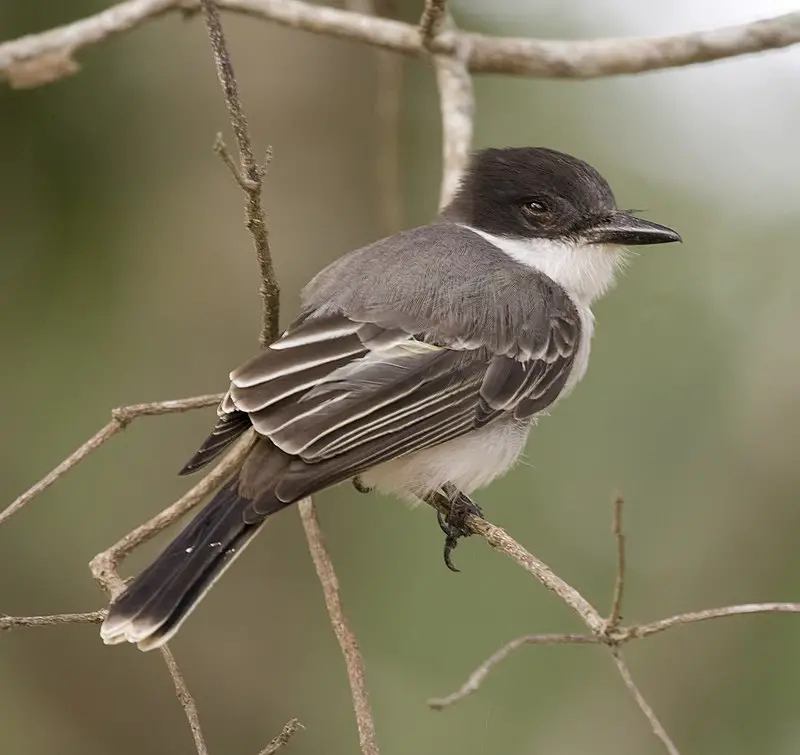
The Loggerhead Kingbird is a beautiful species of bird found in the West Indies, Bahamas, Cayman Islands, Cuba and Hispaniola. It prefers to inhabit subtropical or tropical moist lowland forests as well as montane forest habitats.
The kingbird has striking plumage with greyish-blue upperparts and bright yellow underparts. Its long tail feathers are darkly tipped which helps it stand out from other birds in its range.
This species feeds on insects such as beetles, grasshoppers and dragonflies that can be caught mid-air during its aerial forays.
Nesting season begins between February to May where they typically build their nests near riverside trees or shrubs and lay two eggs at once before incubating them for about 13 days till hatching occurs.
Although not yet threatened by extinction this shy creature should still be appreciated by all nature lovers who get lucky enough to observe one.Scientific classification:
| Kingdom | Animalia |
| Phylum | Chordata |
| Class | Aves |
| Order | Passeriformes |
| Family | Tyrannidae |
| Genus | Tyrannus |
| Species | T. caudifasciatus |
9. Bahama Woodstar
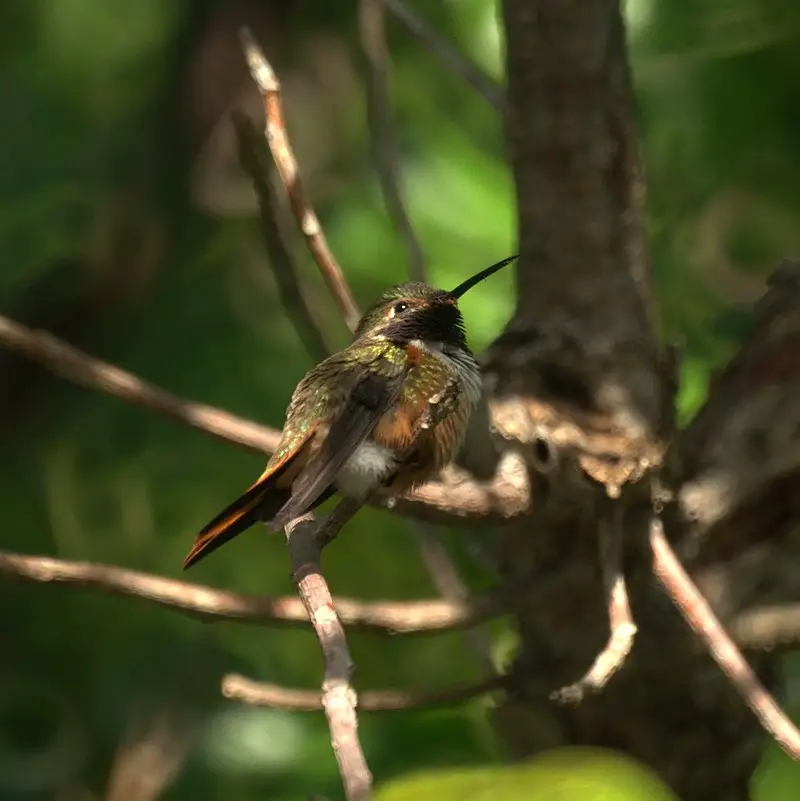
The Bahama woodstar, or ‘hummer’, is a species of hummingbird found in the Lucayan archipelago. It has a distinct sound it makes while feeding and can easily be identified by locals.
Hummingbirds are one of the most abundant avian families around with 338 recognized species.
These birds have an impressive array of colors that range from pinks and purples to greens and blues, depending on the season.
The wingspan for this particular type ranges from 4-5 inches long – making them quite small compared to other bird types.
They feed on nectar from flowers as well as insects which they obtain through their specialized bill shapes specifically adapted for hovering over plants efficiently so they can extract pollen grains quickly without expending too much energy during flight.
Furthermore, these tiny creatures also possess incredible migratory abilities; some travel up to 6500 miles round trip each year.Scientific classification:
| Kingdom | Animalia |
| Phylum | Chordata |
| Class | Aves |
| Order | Apodiformes |
| Family | Trochilidae |
| Genus | Nesophlox |
| Species | N. evelynae |
Also Featured In: Bahamas Birds, Hummingbirds Live around Florida
10. Bahama Yellowthroat
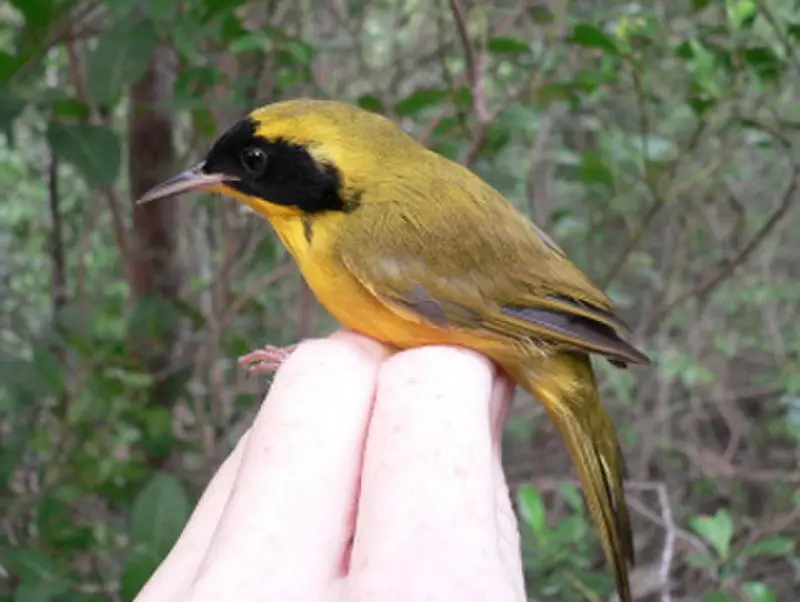
The Bahama yellowthroat is a small New World warbler, endemic to the Bahamas. It has an impressive large bill and measures 15 cm in length.
Male of the nominate race (Geothlypis rostrata rostrata) have olive-green upperparts with white underparts and bright yellow throat patch that extends slightly onto side of breast.
Females are similar but duller overall. There are three subspecies recognized; Geothlypis rostrata maynardi from Abaco Islands, G. r bracensis from Grand Bahama Island & Cay Sal Bank, G .r insularum from Great Inagua island respectively .
They inhabit dense scrubby thickets near water bodies such as swamps or marshes where they forage actively by gleaning insects off vegetation and flycatching low over water surface during breeding season.
Despite its range being limited it is common within its habitat throughout most islands except Grand Bahama Island & Cay sal bank which show some decline due to human activities like development projects & agriculture expansion plansScientific classification:
| Kingdom | Animalia |
| Phylum | Chordata |
| Class | Aves |
| Order | Passeriformes |
| Family | Parulidae |
| Genus | Geothlypis |
| Species | G. rostrata |
11. Black-Faced Grassquit
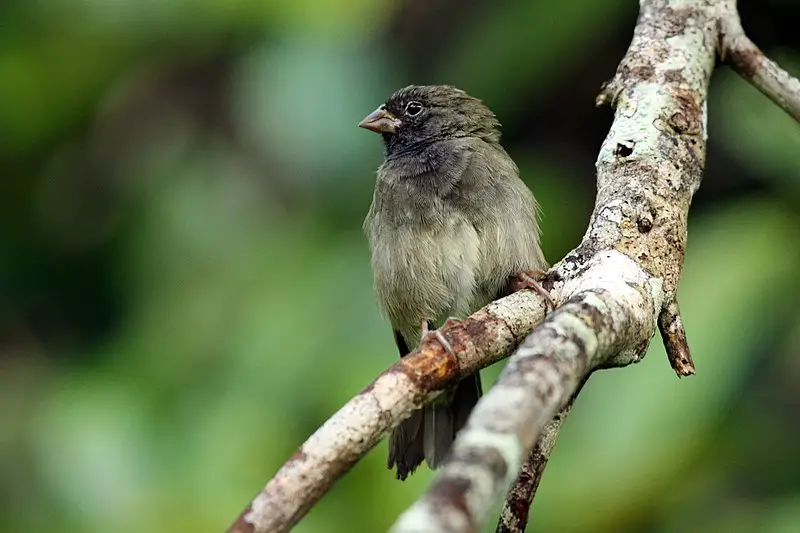
The Black-faced grassquit is a small bird belonging to the tanager family, genetically related to Darwin’s finches. It breeds mainly in the West Indies and along certain parts of Colombia and Venezuela.
The Swedish naturalist Carl Linnaeus first formally described it back in 1766 as part of his twelfth edition work on species classification.
This type of bird has a black head with white spots around its eyes, grey wings and tail feathers; its body is brownish orange or yellow with darker shades towards the belly area.
Its diet consists mostly of seeds from grasses but may also include other insects for additional nutrition during breeding season.Scientific classification:
| Kingdom | Animalia |
| Phylum | Chordata |
| Class | Aves |
| Order | Passeriformes |
| Family | Thraupidae |
| Genus | Melanospiza |
| Species | M. bicolor |
Also Featured In: British Virgin Islands Birds You Need to See, Common Margarita Island Birds